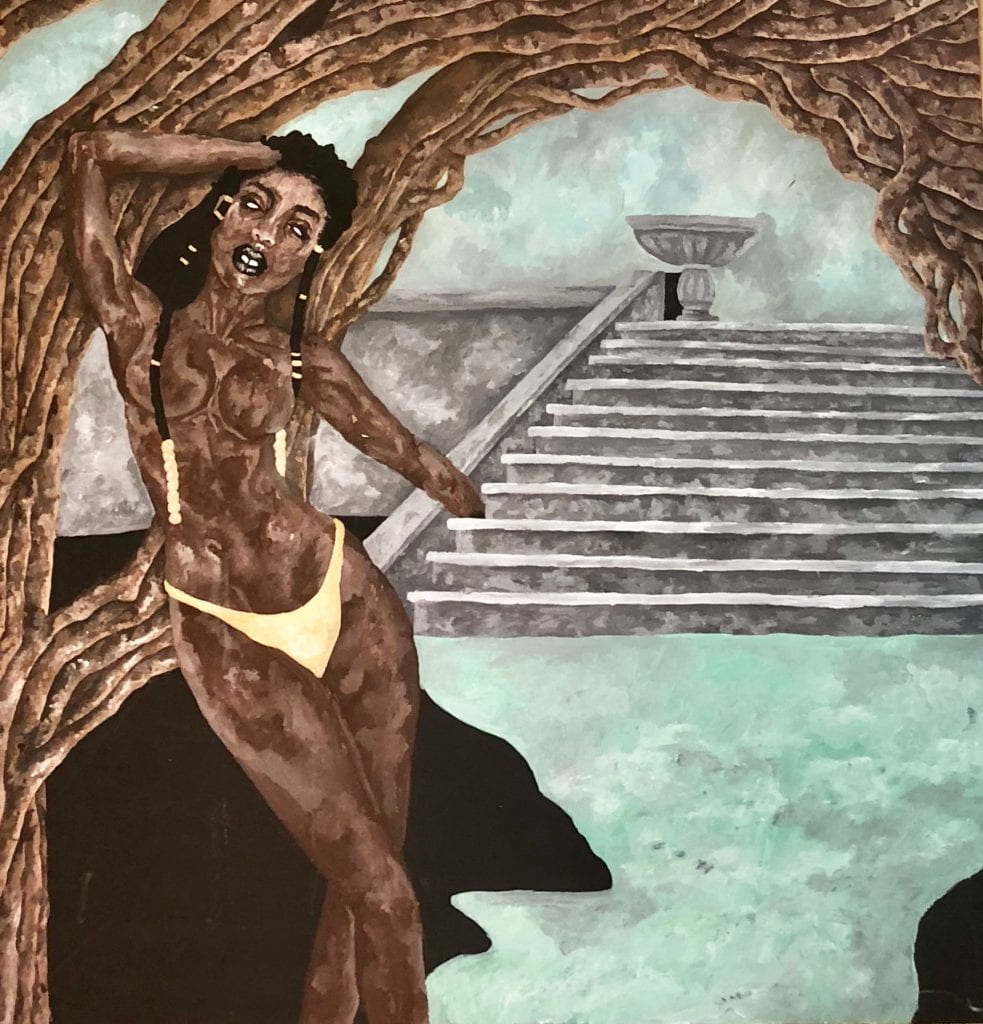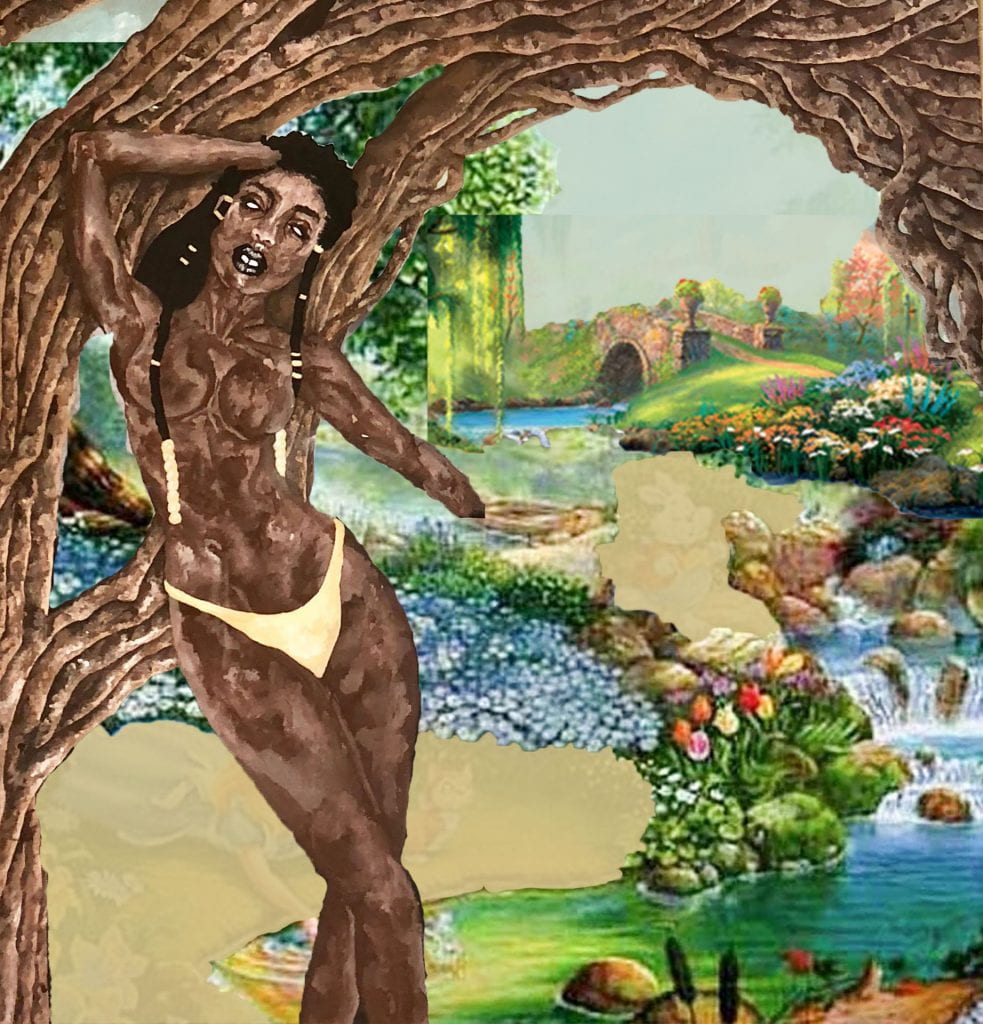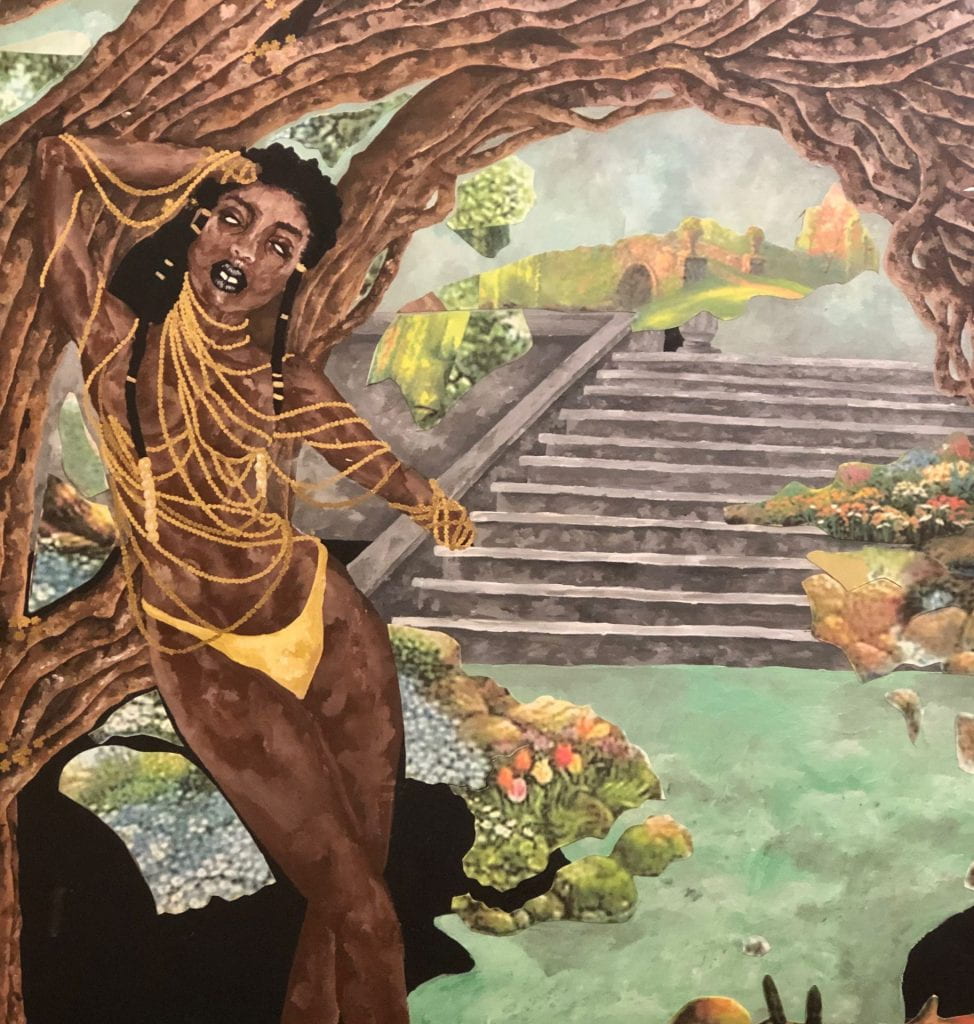Ahmrii Johnson
Intersubjective Vistas:
Beyond the Looking Frame
When considering the physical and conceptual boundaries of a classroom cultural context is significant. Dissolving the metaphysical walls of a classroom is symbolic to dismantling the walls of supervised creativity and imagination. Even in a design school that advertises an openness to dissenting thought, there is a social boundary that may discourage students from releasing reigns on their true identities. It enables the ideology of a creative outcast that remains within the boundary of an accepted outcast. Different, but not too different. However, if ever outcast is relatively the same idea of different, then are they really different? As a result of this contradictory phenomenon, a classroom is commonly a viewpoint of individuality, but not always a door. Correspondingly, the idea of “beyond the classroom” is the idea of true creative liberation. In this space imagination and ideas are unapologetic and limitless. Personally, the thought of imagination elicits a melting pot of fantasy, magic, genuinity, and impenitent idealism. In an institution with the purpose of encouraging inventiveness in a grey corporatciety, the classrooms should inherently have no boundaries whatsoever. Instead of “challenging the boundary” students should be taught that there was never really one to begin with.
To establish a successful composition I will collage relational images together on Photoshop. Through layering, collaging, and image adjustments I can create a printable layout that will best communicate the idea of “looking beyond”. Then, with the images composed I can translate them onto paperboard and progress with analog manipulation. For analog, I will use acrylic paint and ink to create detailed descriptions of the imaginative world meant to embody limitless creativity.
Free-Write Poetic Response:
Conversations
What would you call me? I am not just anything but for the most part I am something. I am not flexible to the gust of perception, but founded in the root of conception. I do not speak on matters of politics, activism, or any of the conversations that many turn their head from. But I do enchant those aligning thoughts. I have no controversial stand other than the stance that is held above doubt. What is doubt? Where does it stem from? It does not exist here. Here exists the beyond. The space of matters, values, and ideas that travel beyond the frame, as if there is no boundary.
Final Review/Reflection
Dissolving the metaphysical walls of a classroom is symbolic to dismantling the walls of managed and supervised art making. Even in a design school that advertises an openness to dissenting thought there is a social boundary that may discourage students from releasing reigns on their true identities. The idea of “beyond the classroom” is the idea of true imaginative and creative liberation. In this space imagination and ideas are unapologetic and limitless. Personally, the thought of imagination elicits a melting pot of fantasy, magic, genuinity, and impenitent idealism. In an institution with the purpose of encouraging inventiveness in a grey corporatciety, the classrooms should inherently have no boundaries whatsoever. Instead of “challenging the boundary” students should be taught that there was never really one to begin with. I was inspired by the eloquent works of classical Disney animation art, specifically in the illustrations of vast landscapes. Collaging the characteristics of the landscapes of various worlds allowed me to develop an imaginative world of my own, unique to my viewpoint. I intended for audiences to feel like they had an open invitation to look into and beyond the mystical properties of my creative frame.




